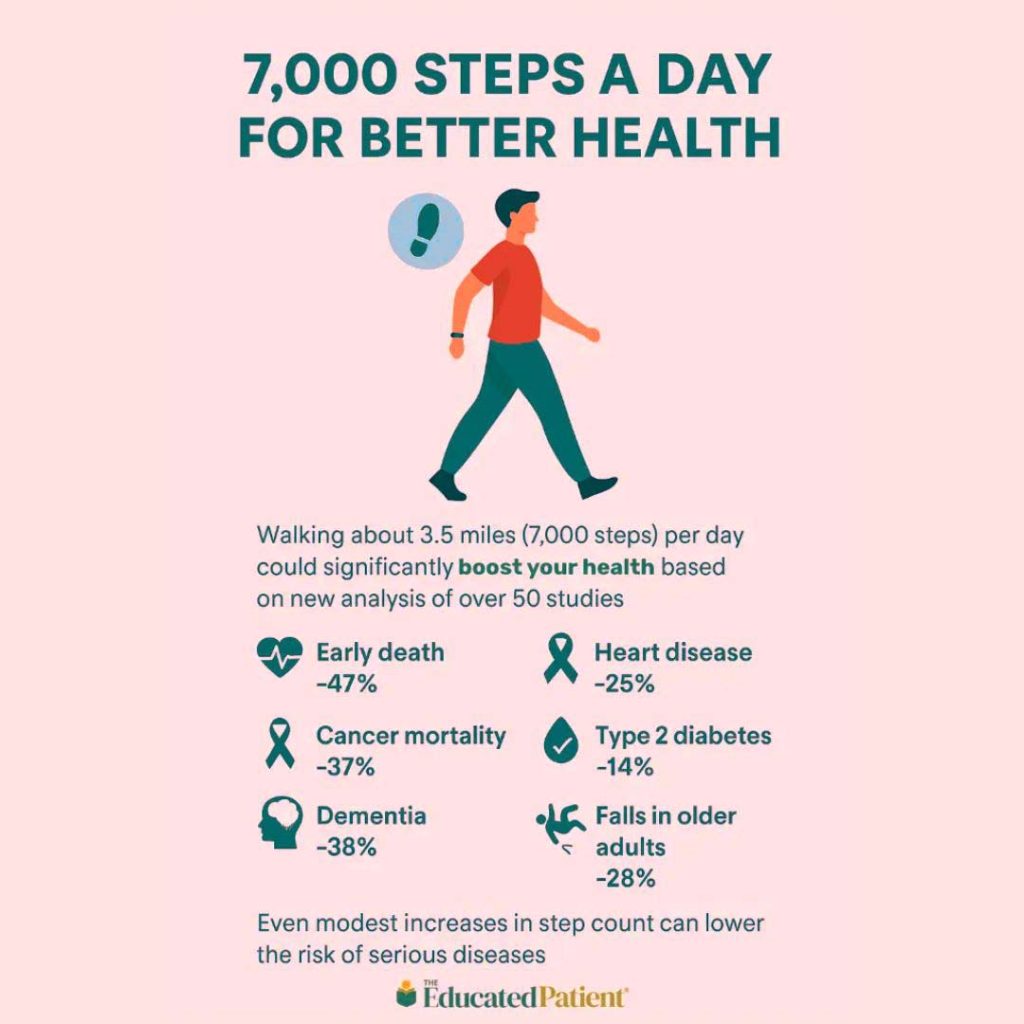BIG HEALTH BENEFITS from Walking Just 7,000 Steps a Day
Walking just 7,000 steps (about 3.5 miles, or 5.6km) a day could significantly improve your health and lower your risk of serious diseases, according to a recent analysis of over 50 studies published in the last decade.
While many people have heard the advice to hit 10,000 steps a day, this new research suggests that 7,000 steps might be a more realistic, and still powerful target, especially for those just starting to move more.
The major study published in The Lancet Public Health analysed data from more than 160,000 adults across multiple countries – including the US, UK and Japan – and found that walking around 7,000 steps per day was linked to significant health benefits.
The study found that more daily steps were strongly linked to reduced risks of the following:
> Early death: 47% lower risk when walking 7,000 steps versus just 2,000
> Heart disease: 25% lower risk of developing it, and 47% lower risk of dying from it
> Cancer mortality: 37% lower risk
> Type 2 diabetes: 14% lower risk
> Dementia: 38% lower risk
> Depression symptoms: 22% lower risk
> Falls: 28% lower risk in older adults
These findings suggest that even moderate increases in daily movement can have profound effects on long-term health and longevity.
Investigators believe these findings are especially important for older adults or those with mobility challenges, who may find the 10,000-step goal out of reach. The study also emphasizes that more walking is generally better, but “some is better than none.” Even small changes – such as taking short walks during the day – can protect your heart, mind and overall well-being.
Researchers observed that the benefits of walking tended to plateau around 7,000 steps, meaning going from 7,000 to 10,000 steps doesn’t necessarily produce much additional benefit for most people.
That said, we are creatures that are meant to move, and walking remains one of the most accessible and effective forms of exercise, and experts emphasise that combining it with other physical activities, like strength training and aerobic workouts, can provide even greater protection against disease and cognitive decline.
References: The Educated Patient; Collective Evolution
(Illustration: The Educated Patient)


